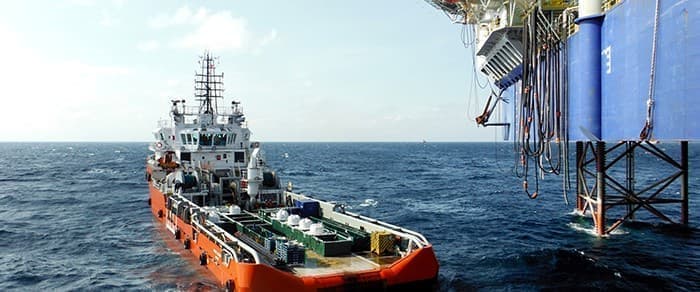
When the energy crisis hit a nadir two years ago, highly indebted oil and gas companies quickly changed their playbook, adopting stricter cost discipline, cutting back on expensive drilling programs and vowing to return more cash to shareholders in the form of dividends and buybacks. Many energy companies are still reluctant to go back to their trigger-happy exploration and drilling days despite high oil and gas prices and record profits, and have mainly been falling back on their dwindling stocks of drilled but uncompleted wells (DUCs) to keep going.
But these companies have also perfected a new trick: focusing their energies on low-cost, lower-carbon but high-yield assets. According to Wood Mackenzie’s ‘Oil and gas exploration 2022 edition, exploration well numbers in 2022 were less than half the numbers during pre-pandemic years, yet the total volume of 20 billion barrels of oil equivalent matched was comparable to the average in the 2013 – 2019 period, creating at least $S33 billion of value.
“2022 was a standout year for exploration,” says Julie Wilson, Director of global exploration research at Wood Mackenzie.
While volumes were good, Wilson says, they aren’t “stellar”.
Still, she says, “explorers were able to drive very high value through strategic selection and focusing on the best and largest prospects”.
Related: Everybody Loves Oil Again
The end result is that we’re seeing new discoveries with higher-quality hydrocarbons in portfolios. And it’s also better for the climate because these more strategic discoveries allow companies to “reduce carbon by displacing less advantaged oil and gas supplies while also meeting the world’s energy needs,” according to Wilson.
Wood Mac says that the highest value came from several new deepwater discoveries in Guyana and Brazil; world-class discoveries in a new deepwater play in Namibia; and resource additions in Algeria.
The average discovery last year was over 150 million boe, more than double the average of the previous decade. National oil companies (NOCs) and oil majors accounted for nearly 75% of new discoveries, with Exxon Mobil (NYSE: XOM) TotalEnergies (NYSE:TTE), Petrobras (NYSE: PBR) and QatarEnergy leading the way in net new discovered resources.
Another interesting development: Liquids accounted for 60% of new discoveries, marking just the third time in two decades that liquids made up the majority of new discoveries.
Exxon Makes More Oil And Gas Discoveries Offshore Guyana
Back in October, U.S. oil and gas major Exxon Mobil announced that it had made two more discoveries at the Sailfin-1 and Yarrow-1 wells in the Stabroek block offshore Guyana, bringing discoveries on the block to more than 30 since 2015.
Exxon revealed that the Sailfin-1 well was drilled in 4,616 feet of water and encountered 312 feet of hydrocarbon-bearing sandstone, while the Yarrow-1 well was drilled in 3,560 feet of water and encountered 75 feet of hydrocarbon-bearing sandstone. Exxon, however, did not disclose how much crude oil or gas it estimates the new discoveries to contain, but hiked a previous output forecast for the third quarter from older discoveries in the region.
The company says it has ramped up development and production offshore Guyana at a pace that “far exceeds the industry average”, Exxon’s two sanctioned offshore Guyana projects, Liza Phase 1 and Liza Phase 2, are now producing above design capacity and have already achieved an average of nearly 360K bbl/day of oil. Exxon recently guided its Permian holdings to hit ~1M boe/day in production by 2027, up from a previous forecast of 800K. The company also increased gross production in Guyana by more than 160K bbl/day.
Exxon said a third project, Payara, is expected to launch by year-end 2023 while a fourth project, Yellowtail, could kick off operations in 2025.
Exxon is the operator of the Stabroek block where it holds a 45% interest while partners Hess Corp. (NYSE: HES) and Cnooc (OTCPK: CEOHF) hold a 30% and 25% interest, respectively. Exxon’s oil and gas production are well below record levels, averaging 3.7M boe/day at midyear, in-line with last year but nearly 9% below 4.1M boe/day achieved in 2016.
On Monday, Exxon reported Q4 Non-GAAP EPS of $3.40, beating the Wall Street consensus by $0.12 while revenue of $95.43B (+12.3% Y/Y) beat by $5.22B. In 2022, Exxon Mobil earnings skyrocketed 160% to $14.06 per share while sales edged up 45% to $413.68 billion. For the full year, the oil and gas giant generated earnings of $55.7 billion and $76.8 billion of cash flow from operating activities. Net-debt-to-capital ratio improved to about 5%, with the company managing to retire $7.2 billion in debt in 2022 and managed to close the year with a cash balance of $29.7 billion, providing greater financial flexibility and further strengthening the balance sheet.
XOM stock is up 8.9% in the year-to-date and is trading close to its all-time high.
Source: https://oilprice.com/
